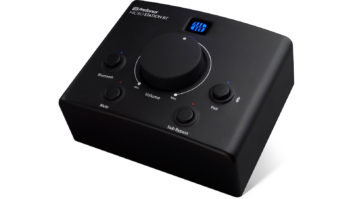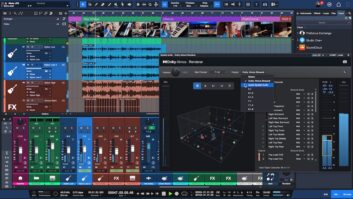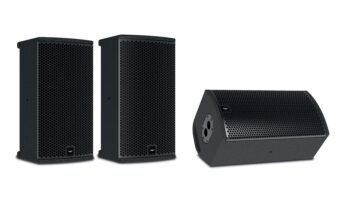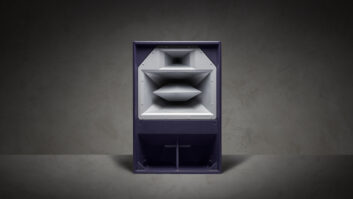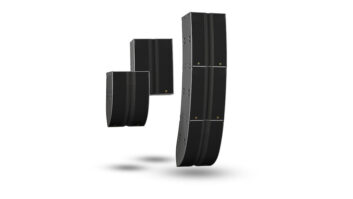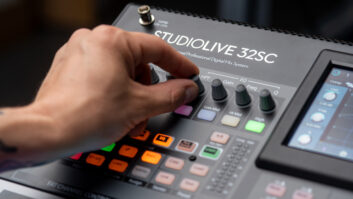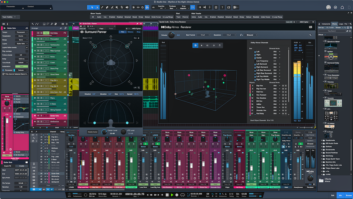This article originally appeared in the January 2019 issue of Pro Sound News. Innovations is a monthly column in which different pro audio manufacturers are invited to discuss the thought process behind creating their products of note.
During 2017, Hugh Sarvis, the director of loudspeaker design for PreSonus Audio Electronics, teamed up with legendary loudspeaker designer Don Keele to begin work on a new loudspeaker concept: constant directivity. After presenting their research at the 143rd AES Convention in New York, Sarvis used this whitepaper as the blueprint for the patent-pending PreSonus CDL12 loudspeaker.

The CDL12 combines the best attributes of point source and line array technology, resulting in a system with 120° horizontal dispersion that is scalable up to 120° of vertical coverage with just six compact enclosures. The consistent center radiation delivers clear, articulate speech intelligibility and natural music reproduction. Before we discuss constant directivity and the unique approach that went into designing the PreSonus CDL12, we should explain what “constant directivity’ means as it relates to loudspeakers.
With any loudspeaker design, there will be changes in frequency response when the user is listening on-axis, within the loudspeaker’s nominal coverage area, as compared to when they are listening off-axis, outside of it. “Directivity” describes the directionality of a sound source and is closely related to how a loudspeaker’s frequency response changes both inside and outside of its designed coverage region.
Related: Innovations: WorxAudio’s XL3 Line Array, by Hugh Sarvis, March 18, 2015
A loudspeaker with constant directivity provides coverage that is consistent in both the horizontal and vertical planes, both in frequency response and SPL. PreSonus CDL12 loudspeakers deliver on this promise by combining the best attributes of line array and point source designs.
In order to understand how unique the CDL12 design is, let’s take a closer look at both traditional approaches, where they excel and where they fall short.
A line array is created by suspending multiple speakers in a straight or curved vertical contour. This allows a line array to cover a greater depth of field with the same SPL because the arrayed enclosures create a line source (as opposed to a single point source). A very tall, true line source will suffer from half as much propagation loss as a point source.
Related: Fellowship Bible Church Services Thrive with PreSonus CDL Series Loudspeakers, Dec. 17, 2018
As stated by the inverse square law, the SPL of a point source will decrease at a rate of 6 dB per doubling of distance when measured in a free field. This is because sound radiates in an omnidirectional pattern, expanding out both vertically and horizontally. Because of this, the sound pressure level of a point source reduces rather quickly as the sound spreads out—like ripples in a pond disturbed by a pebble—only sound waves radiate out in three dimensions.
By contrast, a line source radiates in a nearly cylindrical pattern that spreads rather wide in the horizontal plane, but quite narrow and controlled in the vertical. The propagating sound waves don’t disperse as quickly and therefore maintain a more consistent sound pressure level throughout the space. In other words, if the array is designed properly, the SPL near the front of the audience will be approximately the same as the level at the rear.
All that sounds great … but it does have limitations. While line arrays are great at creating an equal sound pressure level from the front of the audience to the back, they often don’t do a great job at creating the same frequency response at varying distances in the listening field. Most line arrays sound most consistent at distances much greater compared to height of the array. This places listeners in the far field, where diffraction and the natural interference between multiple sound sources settles down, and sound radiation is much more uniform.
Related: PreSonus Audio Electronics Introduces CDL Series Loudspeakers, Sep. 18, 2018
Maybe conventional line arrays aren’t always the solution. This brings us to the traditional point source approach. The advantage of well-designed point source systems is that they provide excellent pattern control in both the horizontal and vertical planes. Unfortunately, while the frequency response remains consistent wherever the listener is within the coverage zone, the SPL will not be consistent from the front of the room to the rear because of propagation loss.
But what if a loudspeaker system could provide consistent SPL and consistent frequency response throughout the audience area?
This is where the PreSonus CDL12 comes in. Rather than relying on a single horn like a point-source loudspeaker, or multiple horns like a line array, the CDL12 is equipped with eight 2-inch drivers aligned in a segmented constant-curvature arc to create a single high-frequency array. The center of each 2-inch driver is carefully located on a constant-curvature contour so that they are equidistant from one another as well as from a central common curvature center. This creates a pseudo point-source array while avoiding traditional compression driver problems. This also allows the CDL12 to be crossed over at a much lower frequency, improving on the point-source listening experience by placing the crossover point at 420 Hz, well below the vocal range.
The CDL12’s high-frequency array is then centered in front of a 12-inch woofer, forming essentially a point-source configuration. Because the output of the low-frequency driver travels from the same acoustic axis as the high-frequency driver array, the pattern always effectively radiates from the center of the CDL12, whether using a single CDL12 or six.
Want more stories like this? Subscribe to our newsletter and get it delivered right to your inbox.
When arrayed together, CDL12 loudspeakers form a true constant-curvature line source that allows sound to propagate from the center of the system so that the frequency response and SPL are consistent throughout the coverage area of the CDL12 system. Because the high-frequency array and 12-inch woofer are on the same acoustic axis, every frequency radiated by the system originates from a common central point and thus creates a near- and far-field response behavior that mimics the behavior of a true point source. With consistent, scalable coverage, frequency response and SPL, the CDL12 is a unique design approach that provides articulate, natural sound reproduction for a wide variety of applications and venue sizes.
Wesley Smith is documentation manager for PreSonus Audio Electronics.
